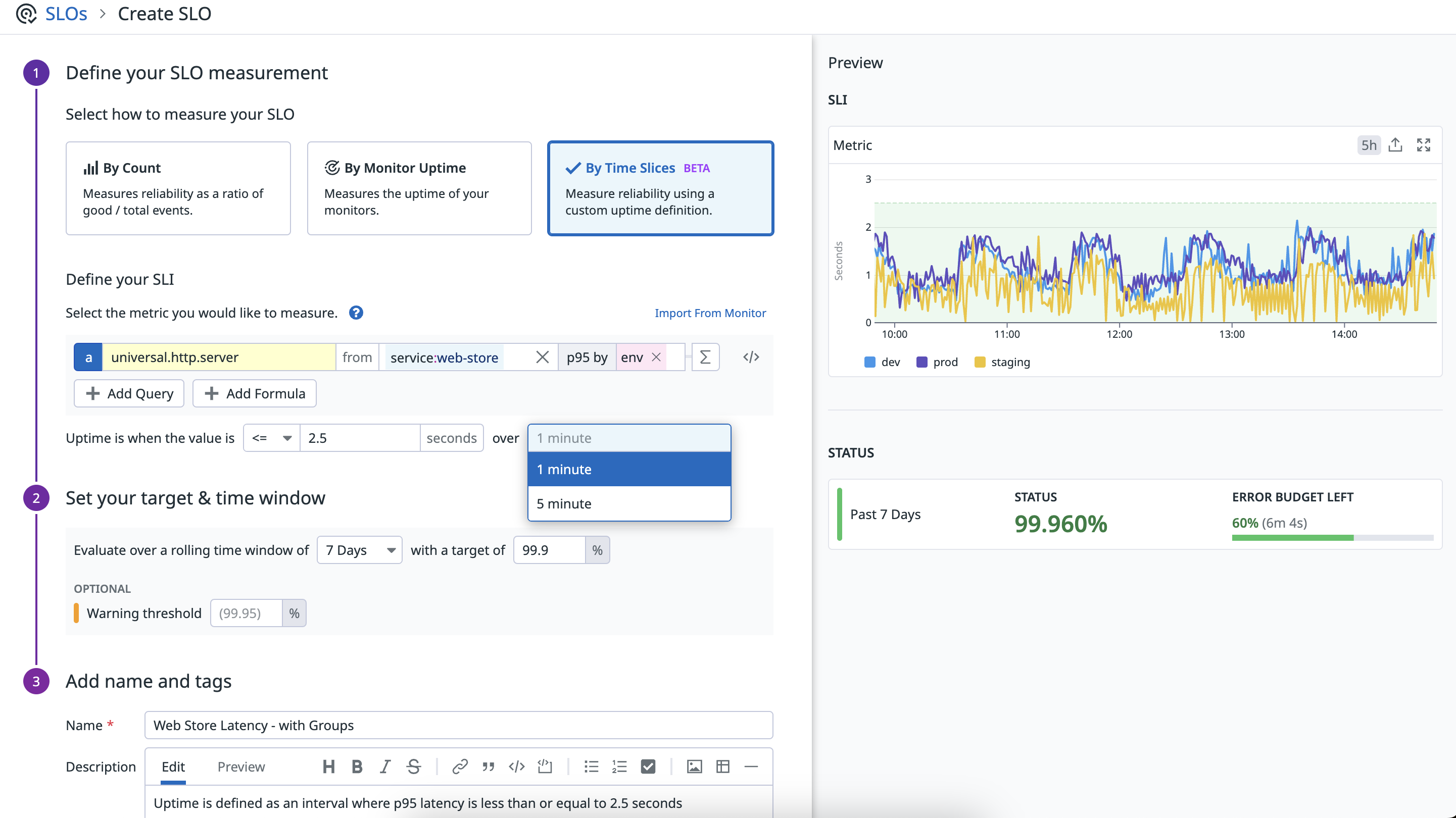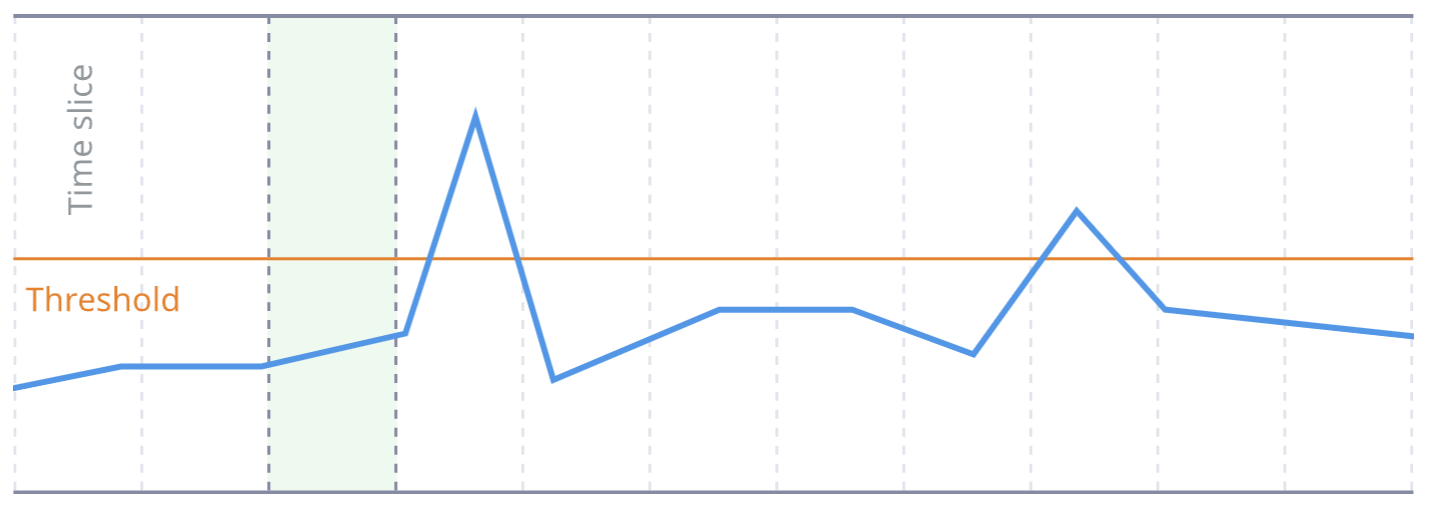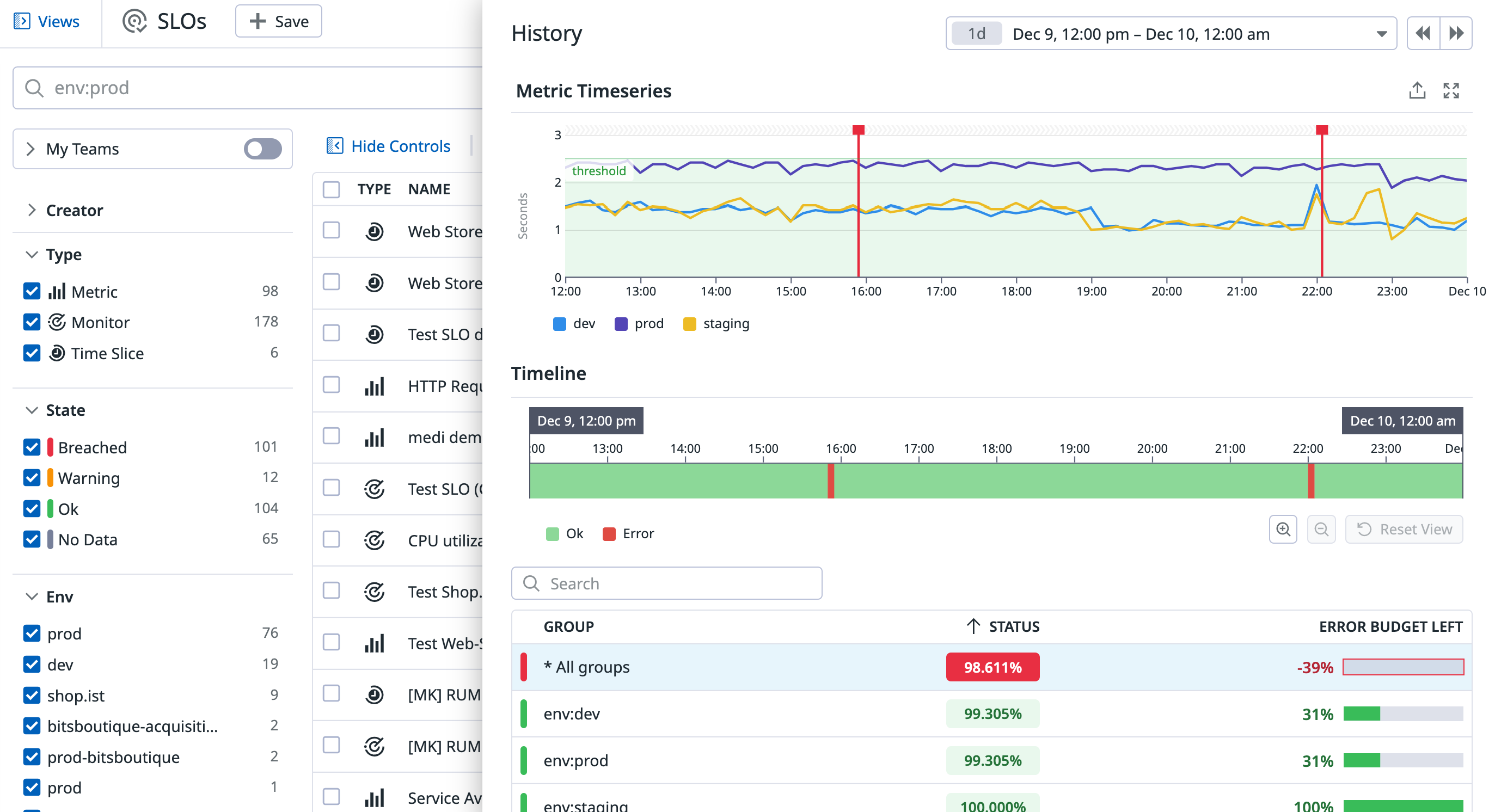- 重要な情報
- はじめに
- 用語集
- Standard Attributes
- ガイド
- インテグレーション
- エージェント
- OpenTelemetry
- 開発者
- Administrator's Guide
- API
- Partners
- DDSQL Reference
- モバイルアプリケーション
- CoScreen
- CoTerm
- Remote Configuration
- Cloudcraft
- アプリ内
- ダッシュボード
- ノートブック
- DDSQL Editor
- Reference Tables
- Sheets
- Watchdog
- アラート設定
- メトリクス
- Bits AI
- Internal Developer Portal
- Error Tracking
- Change Tracking
- Service Management
- Actions & Remediations
- インフラストラクチャー
- Cloudcraft
- Resource Catalog
- ユニバーサル サービス モニタリング
- Hosts
- コンテナ
- Processes
- サーバーレス
- ネットワークモニタリング
- Cloud Cost
- アプリケーションパフォーマンス
- APM
- Continuous Profiler
- データベース モニタリング
- Data Streams Monitoring
- Data Jobs Monitoring
- Data Observability
- Digital Experience
- RUM & セッションリプレイ
- Synthetic モニタリング
- Continuous Testing
- Product Analytics
- Software Delivery
- CI Visibility (CI/CDの可視化)
- CD Visibility
- Deployment Gates
- Test Visibility
- Code Coverage
- Quality Gates
- DORA Metrics
- Feature Flags
- セキュリティ
- セキュリティの概要
- Cloud SIEM
- Code Security
- クラウド セキュリティ マネジメント
- Application Security Management
- Workload Protection
- Sensitive Data Scanner
- AI Observability
- ログ管理
- Observability Pipelines(観測データの制御)
- ログ管理
- CloudPrem
- 管理
Time Slice SLO
概要
Time Slice SLO を使用すると、独自の稼働時間定義に基づいて信頼性を測定できます。稼働時間はメトリクス タイム シリーズ上の条件として定義します。たとえば、p95 レイテンシーが 1 秒未満である場合を稼働時間と定義することで、レイテンシー SLO を作成できます。
Time Slice SLO はモニター ベース SLO の便利な代替手段です。モニターを介さずに稼働時間 SLO を作成できるため、モニターと SLO の両方を作成・管理する必要がありません。
Time Slice SLO を作成
Time Slice SLO は、以下のいずれかの方法で作成できます。
作成ページから SLO を作成
- Service Management > SLO に移動します。
- + New SLO をクリックして Create SLO ページを開きます。
- SLO の測定方法として By Time Slices を選択します。
- メトリクス クエリ、比較演算子、しきい値を選択して稼働時間の条件を定義します。例: p95 レイテンシーが 1 秒未満の場合を稼働時間とする。または、モニターから稼働時間をインポートすることも可能です。
- 稼働時間計算には 1 分または 5 分のタイム スライスを設定します。
- タイムフレームと目標値を選択します。
- SLO に名前とタグを付けます。
- Create をクリックします。
既存のモニター SLO をエクスポート
単一メトリクス モニター ベース SLO のみエクスポートできます。メトリクス以外のモニターや複数モニターに基づく SLO はエクスポートできません。
既存のモニター ベース SLO をエクスポートして Time Slice SLO を作成します。モニター SLO から Export to Time Slice SLO をクリックします。
モニターからインポート
メトリクス モニター SLO のみがインポートのモニター選択に表示されます。
Create or Edit SLO ページの Define your SLI セクションで Import from Monitor をクリックし、ドロップダウンから選択するかモニター セレクターで検索します。
注: Time Slice SLO はローリング期間をサポートしていません。ローリング期間はモニター クエリからタイム スライス クエリに引き継がれません。
稼働時間の計算
Time Slice SLO の稼働率を計算するために、Datadog はタイム シリーズを同じ長さの間隔 (「スライス」と呼びます) に分割します。インターバルの長さは 1 分または 5 分から設定できます:
空間集約と時間集約はメトリクス クエリによって決定されます。時間集約と空間集約の詳細はメトリクスドキュメントを参照してください。
各スライスにはタイム シリーズの単一の値が対応し、value < 1 などの稼働条件がスライスごとに評価されます。条件を満たすスライスは稼働時間と見なされます:
満たさない場合はダウンタイムと見なされます:
以下の例では、Time Slice SLO が 5 分間隔のタイム スライスで構成されており、タイム シリーズ上で稼働条件に違反するポイントがちょうど 1 つあります。この例での条件は p95 レイテンシーが 2.5 秒以下であることです。表示されている総期間は 12 時間 (720 分) で、稼働時間は 715 分 (720 分の総時間 − 5 分のダウンタイム) とみなされるため、稼働率は 715/720 * 100 = 99.305% となります。
グループと全体の稼働率
Time Slice SLO では、メトリクス クエリの「group by」句で定義されたグループごとに稼働率を追跡できます。
グループがある場合、稼働率は各グループごとに個別に計算されます。ただし、全体の稼働率の計算方法は異なります。既存の Monitor SLO の動作と一致させるため、Time Slice SLO では全体の稼働率に同じ定義を採用します。すべてのグループが稼働状態である場合にのみ、それを全体の稼働と見なし、いずれかのグループがダウンタイムの場合は全体をダウンタイムと見なします。そのため、全体の稼働率は常に各グループの稼働率より低くなります。
上記の例では、環境 prod は 12 時間 (720 分) のうち 5 分のダウンタイムがあり、およそ 715/720 * 100 = 99.305% の稼働率となります。環境「dev」も同様に 5 分のダウンタイムがあるため、同じ稼働率になります。つまり、prod または dev のいずれかがダウンタイムだった全体のダウンタイムは 10 分 (重複なし) であり、全体の稼働率は (720−10)/720 * 100 ≒ 98.611% となります。
補正
Time Slice SLO では、補正期間を常に稼働時間として計算に含めます。総時間が変わらないため、エラー バジェットも常に一定量の時間になります。これは、モニター ベース SLO における補正処理と比べて大幅に単純化・改善された点です。
モニター ベース SLO の場合、補正期間は計算から除外されます。たとえば、7 日間の SLO に 1 日の補正を加えると、1 時間のダウンタイムは 0.6% ではなく 0.7% として計算されます。
$$ 60/8640 *100 = ~0.7% $$
時間を除外すると「時間の伸縮」が起こり、ダウンタイム 1 分が総時間に対してより大きな割合を占めるようになります。
欠損データ
Time Slice SLO では、欠損データを常に稼働時間として扱います。タイムラインのビジュアライゼーションでは、欠損データはグレーで表示されます。
その他の参考資料
お役に立つドキュメント、リンクや記事:








